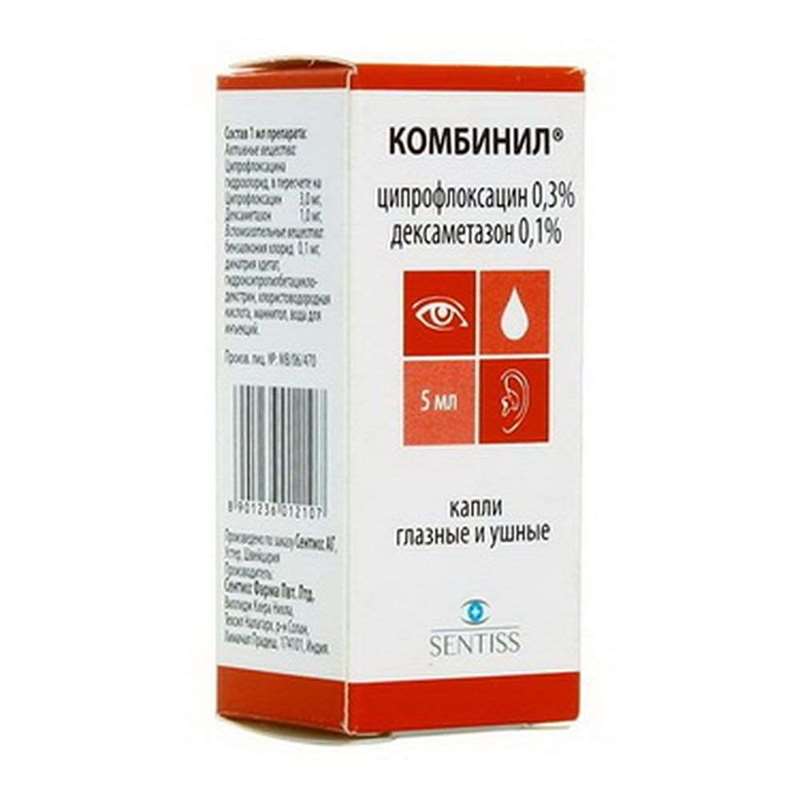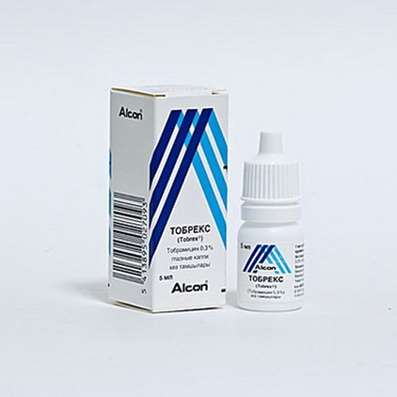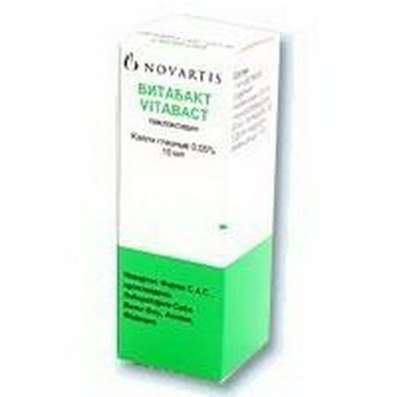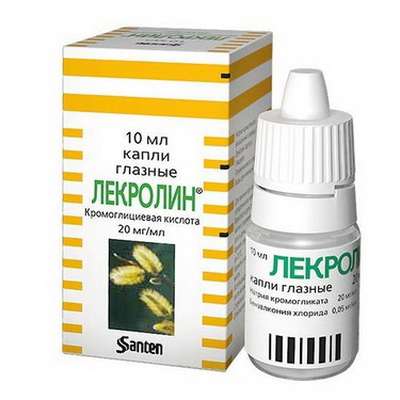Kombinil eye drops - a preparation of anti-inflammatory and antibacterial action.
The combination is intended for local use in ophthalmic and otorhinolaryngological practice. The therapeutic effect of the drug Combined with the antimicrobial effect of ciprofloxacin and the anti-inflammatory effect of dexamethasone.
Ciprofloxacin is an antimicrobial agent from the group of fluoroquinolones, it has a wide spectrum of antibacterial action, it has a bactericidal effect.
The drug inhibits the DNA enzyme enzyme of bacteria, as a result of which DNA replication and the synthesis of cellular bacterial proteins are disrupted. Ciprofloxacin acts both on multiplying microorganisms, and on those in rest.
The spectrum of antibacterial action of ciprofloxacin includes:
Gram-negative microorganisms:
- Esherichia coli.
- Salmonella spp.
- Shigella spp.
- Proteus spp. (indolpositive and indolotric).
- Morganella morganii.
- Citrobacter spp.
- Klebsiella spp.
- Enterobacter spp.
- Vibrio spp.
- Campylobacter spp.
- Hafnia spp.
- Providencia stuartii.
- Haemophilus influenzae.
- Pasteurella multocida.
- Pseudomonas spp.
- Gardnerella spp.
- Legionella pneumophila.
- Neisseria spp.
- Moraxella catarrhalis.
- Acinetobacter spp.
- Brucella spp.
- Chlamidia spp.
Gram-positive microorganisms:
- Staphylococcus spp.
- Streptococcus pyogenes.
- St. agalactiae.
- Corynebacterium diphtheriae.
- Listeria monocitogenes.
The drug is low toxicity.
Dexamethasone is a synthetic glucocorticosteroid, mainly used as an anti-inflammatory and immunosuppressive agent.
With topical application, the therapeutic activity of dexamethasone is due to anti-inflammatory, antiallergic and antiproliferative action.
It reduces the permeability and proliferation of capillaries, local exudation, cellular infiltration, phagocytic activity, collagen deposition and fibroblast activity, inhibits the formation of scar tissue. Thus, dexamethasone reduces the main symptoms of inflammation.
Pharmacokinetics
Absorption and Metabolism
When used in ophthalmology, ciprofloxacin penetrates well into various tissues of the eye, with the exception of the lens. C max occurs within 30 minutes, the highest concentration is observed in the moisture of the anterior chamber. Systemic reabsorption is observed. However, the drug concentration achieved in the blood is well below the detection limit and is not clinically relevant.
Dexamethasone after digestion into the conjunctival sac penetrates well into the epithelium of the cornea and conjunctiva; while in the aqueous humor of the eye, therapeutic concentrations are achieved; with inflammation or damage to the mucous membrane, the penetration rate increases.
When used in otorhinolaryngological practice with the introduction of a fixed combination of ciprofloxacin and dexamethasone in the auditory meatus, the maximum serum concentration for ciprofloxacin is 1.55 ng / l, and for dexamethasone 0.86. ng / l.
Excretion
The half-life of the drugs is 2.9 hours and 2.8 hours, respectively.
The hydroxypropyl betacyclodextrin, which is part of the preparation as an auxiliary component, contributes to the long-term retention of the active substance on the front surface of the eye, thereby increasing the efficacy and duration of the drug.
Indications:
Bacterial inflammatory diseases of the eye and its appendages:
- Acute and subacute conjunctivitis.
- Keratitis.
- Anterior uveitis.
- Blepharitis and other inflammatory diseases of the eyelids.
- Prophylaxis and treatment of infectious complications after wounds of the eye and its appendages and in operations on the eyeball.
Bacterial inflammatory diseases of the ear:
- Acute otitis externa.
- Acute otitis media with a shunt of the tympanic membrane.
- Acute otitis media with granulations and otorrhea in the presence of a shunt of the tympanic membrane.
Contraindications:
- Hypersensitivity to the active substance of the drug or to any of the auxiliary ingredients that form part of this dosage form of the drug.
- Herpetic keratitis and other viral lesions of the cornea and conjunctiva.
- Tuberculosis of the eye.
- Fungal lesions of the eyes.
- Viral infections of the auditory canal.
- Perforation of the tympanic membrane.
- Children under 18 years.
- Pregnancy.
- The period of breastfeeding.
Special instructions:
In bacterial inflammatory diseases of the ear
Before applying ear drops, the external auditory canal should be sanitized (rinse and drain the external ear canal).
Before instillation of the drug into the external ear canal, it should be warmed to body temperature, held in hands for 1-2 minutes.
It is necessary to lie sideways or tilt your head to facilitate burial. To drip into the external ear canal specified number of drops. Allow the drops to drain into the external ear canal, pulling the earlobe down and back. Hold the head in the inverted position for about 2 minutes. You can put in the outer ear canal wool turunda.
In bacterial inflammatory diseases of the eye and its appendages
Prolonged use can lead to an increase in intraocular pressure with subsequent damage to the optic nerve, a decrease in acuity and visual fields, as well as the formation of posterior subcapsular cataract.
When using Combinil-Duo for more than 10 days, it is necessary to control the intraocular pressure.
In acute purulent eye infections, corticosteroids may worsen or mask the symptoms of the disease.
Prolonged use of the drug may reduce the immune response and lead to the development of secondary infection of the eye.
Patients using contact lenses should be removed before instilling the drug and re-dressing only after 20 minutes, since the preservative contained in the preparation may have an adverse effect on the eye tissue.
The bottle must be closed after each use.
Do not touch the tip of the pipette to the eye.
Impact on the ability to manage vehicles and mechanisms
After using the drug, it is possible to reduce the clarity of visual perception, therefore immediately after instillation it is not recommended to drive and engage in activities requiring increased attention and speed of psychomotor reactions.
Suggested Use:
In bacterial inflammatory diseases of the eye and its appendages
1-2 drops are instilled in the conjunctival sac every four to six hours. The first 24 to 48 hours of installation can be done every two hours.
In bacterial inflammatory diseases of the ear
4 drops into the external auditory canal of the affected ear twice a day for 7 days. Do not change the position of the head for 60 seconds to completely penetrate the canal into the auditory canal.
The course of treatment: with acute bacterial conjunctivitis, blepharitis - from 5 to 14 days. At keratitis - 2 4 weeks. For the prevention of inflammatory diseases after surgery with perforation of the eyeball - from 5 days to 1 month.
If the drug is used for more than 10 days, the patient's intraocular pressure should be monitored.
Packaging:
- Comes in original packaging. Item is brand new and unopened.
Storage:
- Keep away from direct sunlight.
- Keep locked and away from children.
- Store in dry place at room temperature.
- Do not exceed storage temperature higher than 25 C
Important notice- the outer box design may vary before prior notice!

 Cart
Cart





